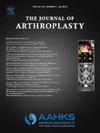Glucose-to-Albumin Ratio as a New Predictive Indicator for Postoperative Delirium in Geriatric Hip Fracture Patients
IF 3.8
2区 医学
Q1 ORTHOPEDICS
引用次数: 0
Abstract
Background
Predicting postoperative delirium (POD) in patients who have hip fractures is challenging due to its complex mechanism. Therefore, there is a critical need to explore and evaluate a novel predictive indicator.
Methods
There were four hematological markers independently associated with POD that were utilized to construct and evaluate a more reliable predictive indicator for POD. The study employed random sampling, dividing the data into training and validation cohorts in a 7:3 ratio. The strength of association between each predictive indicator and POD was assessed using multivariable logistic analysis and propensity score matching analysis. Predictive indicators with significant correlations underwent receiver operating characteristic curve and characteristic parameter comparisons to identify the optimal predictive indicator. Subsequent validation included the assessment of discriminative ability, correlation, and predictive performance. Furthermore, subgroup analysis was conducted to explore potential interactions. A total of 1,807 patients were included in this study, with a POD incidence rate of 16.5%.
Results
Multivariable logistic analysis and propensity score matching analysis demonstrated that the glucose-to-albumin ratio (GAR) was independently positively associated with POD. Specifically, for every 0.1 unit increase in preoperative GAR levels in hip fracture patients, the risk of POD increased by 1.6 times. The receiver operating characteristic curve curve indicated that the optimal cutoff value for the GAR was 0.2, with an area under the curve of 0.8, sensitivity of 81.2%, and specificity of 59.0%.
Conclusions
Preoperative GAR has a certain predictive value for the occurrence of POD and can function as a novel indicator for predicting POD in geriatric hip fracture patients.
葡萄糖与白蛋白比值作为老年髋部骨折患者术后谵妄的新预测指标。
背景:预测髋部骨折患者术后谵妄(POD)由于其复杂的机制是具有挑战性的。因此,迫切需要探索和评估一种新的预测指标。方法:利用与POD独立相关的4项血液学指标,构建和评价更可靠的POD预测指标。本研究采用随机抽样,以7:3的比例将数据分为训练组和验证组。采用多变量logistic分析和倾向评分匹配分析(PSM)评估各预测指标与POD之间的关联强度。对相关性显著的预测指标进行受试者工作特征曲线(ROC)和特征参数比较,确定最佳预测指标。随后的验证包括鉴别能力、相关性和预测性能的评估。此外,进行亚组分析以探索潜在的相互作用。结果:本研究共纳入1807例患者,POD发病率为16.5%。多变量logistic分析和PSM分析表明,糖白蛋白比(GAR)与POD独立正相关。具体而言,髋部骨折患者术前GAR水平每增加0.1个单位,POD的风险增加1.6倍。ROC曲线显示GAR的最佳临界值为0.2,曲线下面积(AUC)为0.8,敏感性为81.2%,特异性为59.0%。结论:术前GAR对POD的发生有一定的预测价值,可作为预测老年髋部骨折患者POD的新指标。
本文章由计算机程序翻译,如有差异,请以英文原文为准。
求助全文
约1分钟内获得全文
求助全文
来源期刊

Journal of Arthroplasty
医学-整形外科
CiteScore
7.00
自引率
20.00%
发文量
734
审稿时长
48 days
期刊介绍:
The Journal of Arthroplasty brings together the clinical and scientific foundations for joint replacement. This peer-reviewed journal publishes original research and manuscripts of the highest quality from all areas relating to joint replacement or the treatment of its complications, including those dealing with clinical series and experience, prosthetic design, biomechanics, biomaterials, metallurgy, biologic response to arthroplasty materials in vivo and in vitro.
 求助内容:
求助内容: 应助结果提醒方式:
应助结果提醒方式:


